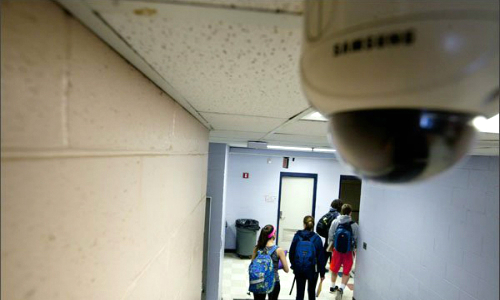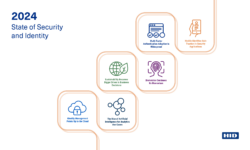Security Systems Sales in U.S. Education Market Growing 1% Annually, IHS Says
Despite tepid sales, security manufacturers are looking to apply new security technologies to improve school safety, which could help reignite market growth.

New technologies are now currently being investigated to improve safety at schools, including facial recognition, logical and physical security identity management integration and high-security classroom doors, according to IHS Markit.
DALLAS — Security equipment sales and services in the education market reached $2.7 billion last year in the United States, according to a new research note by IHS Markit. Because a large majority of schools have already implemented video surveillance and access control systems, the sector is forecast to grow on average 1% annually, reaching $2.8 billion by 2021.
The research note cited survey data from the National Center for Education Statistics, which found the proportion of schools deploying video surveillance systems has risen from 20% in 1999 to more than 70% in 2013. Likewise, the proportion of schools actively controlling the entrances to their buildings has risen from 75% to more than 90%.
Despite advancements in the level of security used on school premises, the number of mass shootings at U.S. schools has remained relatively constant throughout the past 30 years. When looking specifically at secondary schools, the number of mass shootings has reached an unprecedented high in the past five years.
New technologies are now currently being investigated to improve safety at schools, including facial recognition, logical and physical security identity management integration and high-security classroom doors, according to IHS.
“With the growing number of schools in the United States with video surveillance, electronic access control and other traditional security systems, the number of potential ‘greenfield’ projects for suppliers falls,” states Jim Dearing, security and building technologies, senior analyst, IHS Markit. “Declining numbers of new security system installations will lead to slowing market growth over the next five years.”
Nevertheless, Dearing explains security manufacturers are looking to implement the following new security technologies to improve school safety, which would also help reignite market growth:
Facial recognition technology
Many of the video surveillance systems currently used in schools are not actively monitored and also rarely lack any form of effective automated response. Adoption of facial recognition technology would allow the surveillance system to proactively search for potential threats and alert school administrators and security staff about unrecognized individuals in the building.
Unfortunately, affordable facial recognition technologies are often unable to adequately recognize the number of faces in a typical school; plus, these systems can place a large strain on a school’s information technology network.
Logical and physical security identity management integration
Integrating the school’s access control database with a higher authority logical database — for example, a student directory — would allow the access rights of former staff, and students who have been expelled or already graduated, to be removed automatically.
However, access control providers may find it difficult to get permission to access student records and other sensitive data. Education administrators may also be uncomfortable with possibly creating a potential avenue of cyberattack.
High-security classroom doors with multipoint looking systems
Higher-grade doors would create a far more effective barrier between students and potential attackers, creating numerous safe spaces throughout the building in emergencies.
It’s also true, though, that purchasing thousands of doors would be expensive. Fire regulations often dictate that key entrances and exits remain fail-safe during emergencies. Locking and unlocking doors multiple times would also disrupt teaching.
Weapons checks using metal detectors or x-ray machines at school entrances
Using metal detectors or x-ray machines at entrances along the school perimeter makes bringing weapons into the school much more difficult. However, schools often have multiple entrances, which means each school would require multiple detectors or x-ray machines—both of which are expensive.
The school would also need to hire additional security staff to operate each machine. Securing entrances in this manner would also mean long queues would form after breaks and lunchtime, reducing the free time of students and staff.
If you enjoyed this article and want to receive more valuable industry content like this, click here to sign up for our FREE digital newsletters!

Security Is Our Business, Too
For professionals who recommend, buy and install all types of electronic security equipment, a free subscription to Commercial Integrator + Security Sales & Integration is like having a consultant on call. You’ll find an ideal balance of technology and business coverage, with installation tips and techniques for products and updates on how to add to your bottom line.
A FREE subscription to the top resource for security and integration industry will prove to be invaluable.













